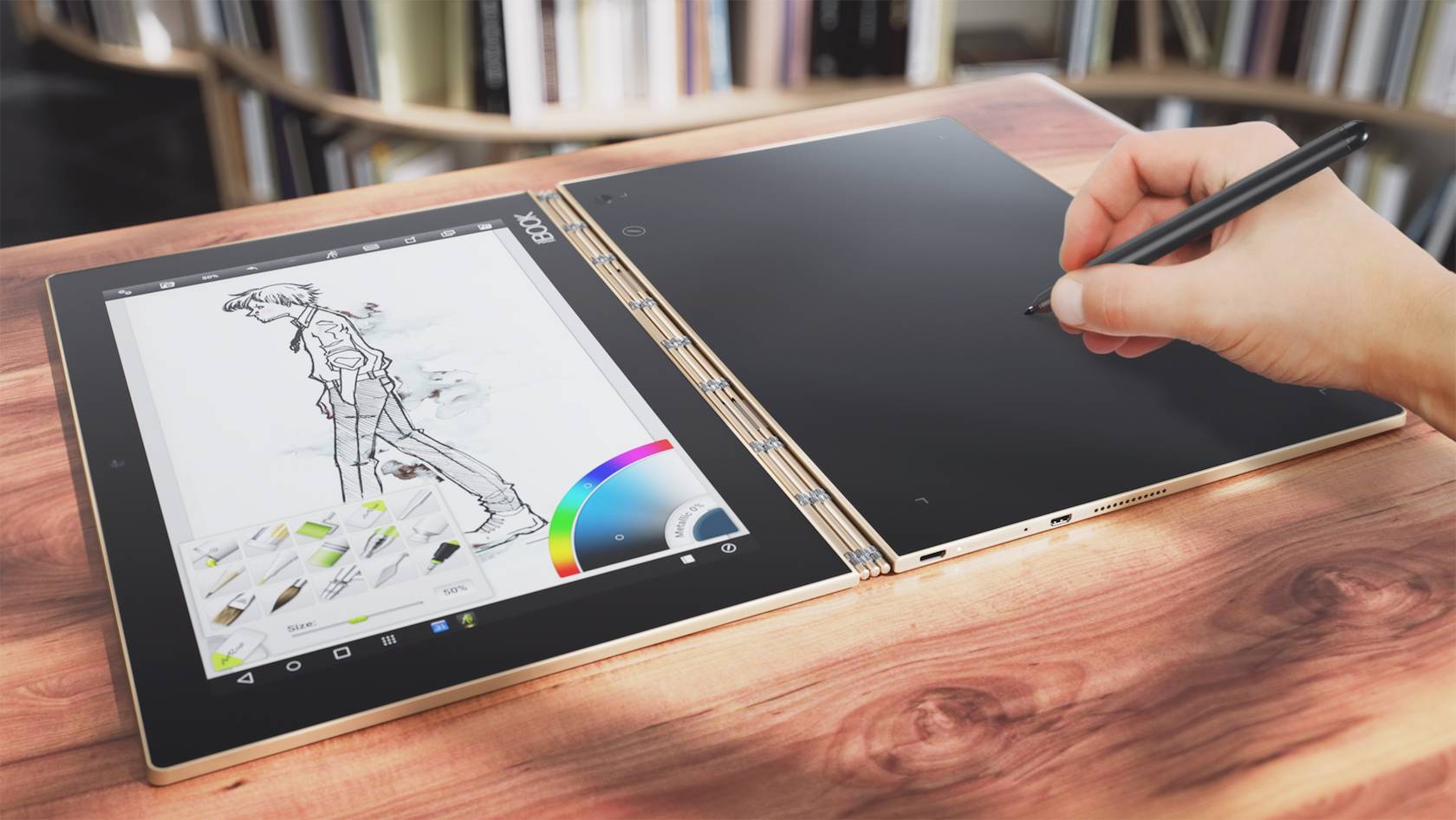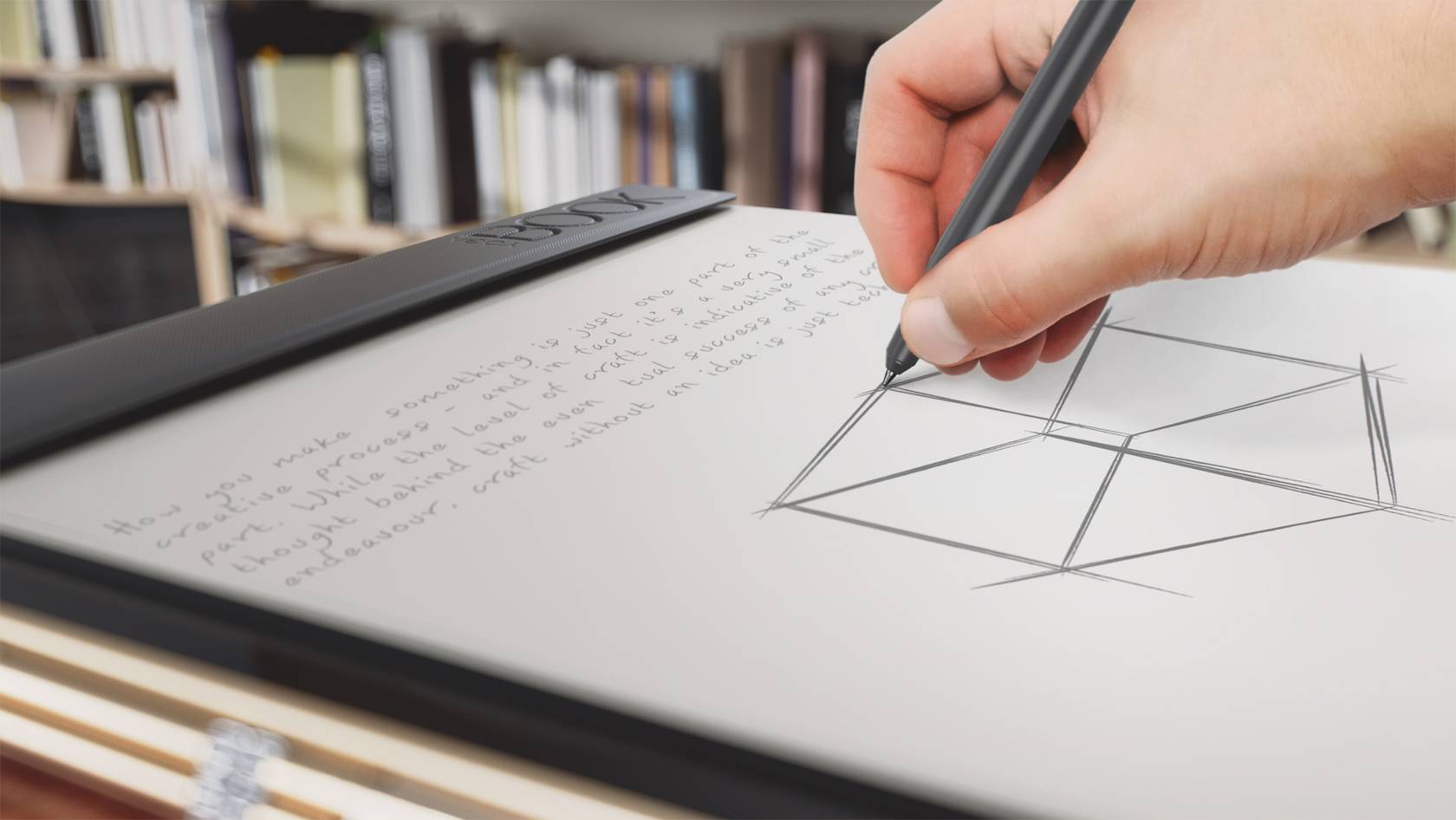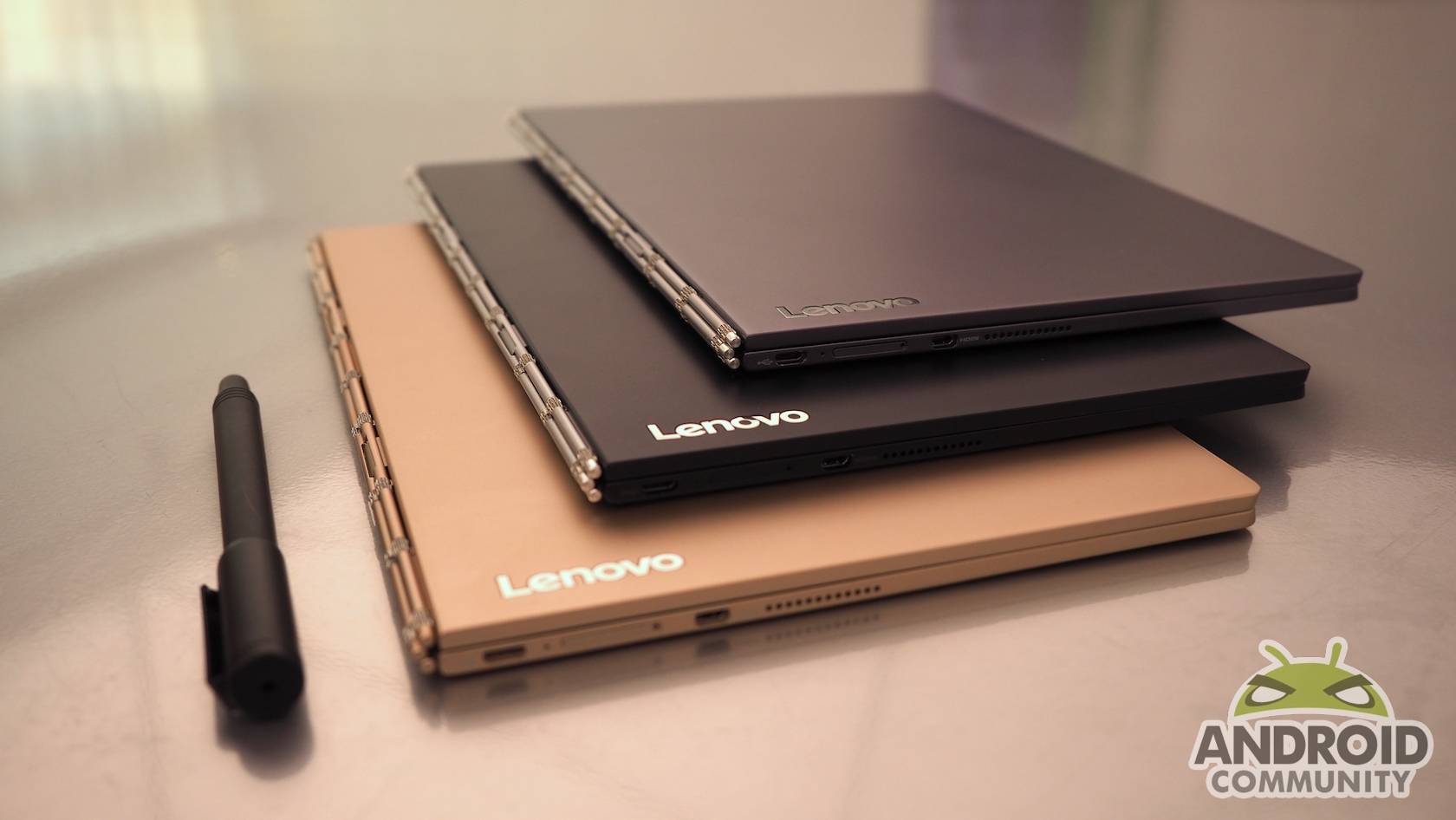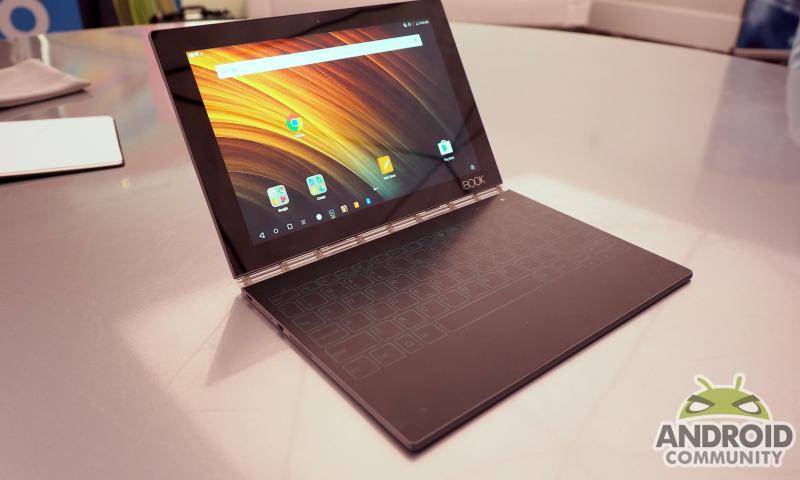Once upon a time, a few good, imaginative people inside Microsoft dared to dream of a device that could be best described as a tablet fused inside a notebook. While that idea never materialized and the dreamers eventually ventured off on their own to produce the Paper app, the dream never really died. Today at IFA 2016, Lenovo is giving flesh to that dream. Sort of. While the Lenovo Yoga Book does look the part, in practice, it really is only half the equation, with a regular Android tablet married to a TRON-like on-screen keyboard display that doubles as a Wacom tablet and notepad.
We’ll let those words sink in for a while, because, honestly, it’s quite a lot to take in. The Lenovo Yoga Book looks, sounds, and feels like a melting pot of many ideas and technologies that have been bandied about through the years. Amusingly, the least exciting part of Yoga Book is what drives most of its power, the Android tablet half which we’ll get to later.
In terms of form factor, the Yoga Book resembles more Lenovo’s selection of Windows convertibles rather than its Android Yoga tablets, except for one thing: It doesn’t have a real, physical keyboard, which is actually major feature #1, what Lenovo brands as a “Halo Keyboard”. While the non-tablet half of the Yoga Book is, indeed, a touch screen display, it is limited to showing the outlines of a keyboard. The idea of typing on a pure virtual keyboard, without the tactile feedback of real keys, brings us back to the old debates for or against on-screen keyboards. At least this one doesn’t cover up precious real estate and, from our brief experience with it, offered a pretty decent, and accurate, experience. Perhaps today’s generation, Lenovo’s core target with this odd device, have their brains, fingers,and nervous systems adjusted to this way of typing already.

Things get both better and weirder from here. That half has a second, perhaps more interesting, function. It also hides a Wacom digitizer underneath, one that supports 2,048 levels of pressure and 100 degree angle detection of the accompanying “Real Pen” stylus. Yes, it is also a Wacom tablet but if you were thinking of something like a Cintiq or a Samsung Galaxy Note, you might be terribly disappointed. It is, instead, more like Wacom’s traditional Intuos non-display drawing tablets that artists use. For those unfamiliar with this line of products, it basically means you don’t see what you’re drawing on the surface you are drawing on, as you would on paper. It definitely takes some hand-eye coordination to get that going, which might turn off many potential buyers. Ironically, the tablet half of the Yoga Book doesn’t support the stylus.

But wait, there’s more! And this is where things hit the analog side a bit. If you do prefer seeing what you’re drawing immediately and directly, the Yoga Book still offers an option for you. Lenovo provides a sheaf of paper it names “Book Pad” that you magnetically latch on to the digitizer/keyboard surface. You then switch out the Real Pen’s nib and you can start scribbling or sketching on the paper and see the results. It doesn’t stop there, though. Anything you write on the paper gets captured and converted into a digital counterpart, stored in Lenovo’s Note Saver app. Sounds familiar? That’s basically the same system that Wacom introduced in its Bamboo Spark. We wouldn’t be surprised if there’s pieces of that technology at work here.

Now comes the somewhat disappointing part. While the keyboard/digitizer half of the device is both exciting and weird, the tablet half is comparatively plain. It’s a 10.1-inch Android tablet powered by an Intel Atom x5-Z8550, from the chip maker’s soon to be defunct processor line. There is, at least, 4 GB of RAM and 64 GB of storage and a whole plethora of sensors you’d find in phones more than tablets. The display, however, is only 1920×1200 pixels. One the one hand, you might be expecting a bit more muscle. On the other hand, it does help keep the price tag low.
Setting aside the tablet part, the Lenovo Yoga Book is a rather daring, and admittedly innovative, dive into a new category of 2-in-1 tablets that aims to cater to a new generation of users, one that swears no loyalty to clicky keyboards. But, at the same time, it feels like it misses the mark on some points. How the market will respond to this novel product is still hard to say, but they probably won’t mind the price tag. The Lenovo Yoga Book will hit markets in October for $499, available in Gunmetal Grey and Champagne Gold. There is also a Windows version selling for $549, only in Carbon Black. While slightly more expensive than comparable Android or Windows tablet, you’ll be hard pressed to find one that dares to take the plunge like this.


























